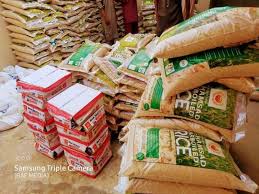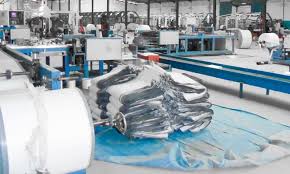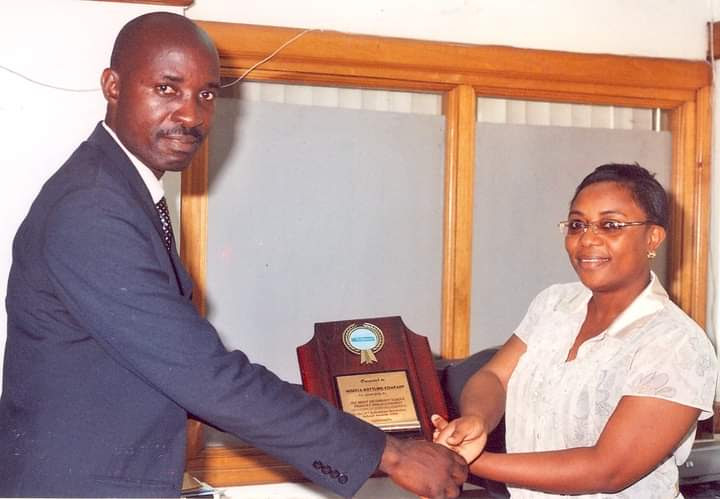![]()
If you’ve landed on this article page, you’re probably searching for a
good business idea—an idea that’s light on the pocket but heavy on
returns, promising both a fulfilling journey and potential profit.
|
How to start Woven Sacks Production Business in Nigeria
As the demand for durable and eco-friendly packaging solutions
continues to rise, understanding how versatile PP woven sacks
are crafted has never been more crucial. Woven bags
manufacturing process involves using premium polypropylene (PP)
resin to create durable woven fabric, which is then printed,
cut, and stitched into bags of various styles and sizes.
Market Potential: The major users of woven sacks are fertilizer,
sugar, animal feeds, and cement. Starches, pesticides,
detergents and many other industrial bulk items are also being
packed in woven sacks. HDPE strips also used for deck chairs,
etc. PP strips used for marine rope manufacturing.
With the introduction of circular looms, cost of production has
come down drastically and making these sack more preferable now.
Demand is ever growing with more and more factories preferring
woven sacks for packaging. 90% of the production is consumed in
the domestic industry while a little is being imported to border
countries. With small and medium scale industries/ agricultural
projects springing up, the demand also increases.
The market cuts across the whole parts of the country and
neighboring African countries.
Manufacturing Process: First the tape is produced through the
tape extrusion machine.
This tape is fed to knitting machine to form cloth on circular
weaving machine.
Cloth thus formed is cut to required dimensions and stitched to
size.
Printing is also done as per requirement and plan according to
IS standards to meet customers’ requirements.
Location of the Project
The project can be located in any part of the country either in
the Northern and Southern Nigeria.
Project Estimation
Unit runs on single shift 25days per month; Wastage of raw
materials estimated is around 2%; Number of bags per kg
depending on the density used; uninterrupted power availability
is assumed, therefore there should adequate arrangement for
power generating set and other alternatives to power..
450MT production capacity is estimated to be economically viable
for a small scale industry.
Raw-Materials: 40T HDPE/PP granules; printing accessories;
packing accessories. These raw materials are all available
within the country.
Utilities: The project requires 300kva generator set, 11kva
transformer; Electricity & water
Plate creation: If traditional flexographic or gravure printing
is used, plates need to be created. These plates are typically
made of metal or other materials and are engraved or etched with
the design. The plates are then mounted onto the printing press.
Ink prep: Ink is mixed according to the required color and
viscosity specifications.
Printing: We then feed the woven bags into the press, where the
ink is transferred onto the bags using the plates or other
cylinders. This is repeated until all the different colors or
layers of ink are applied.
Dry-cure: The ink is cured or dried after each application,
depending on the method used.
Post-press finishing: After printing we use heat-setting to cure
the ink and improve its durability and apply a varnish or
coating for added protection or glossiness.
Quality control: Throughout this process, our QC measures ensure
that the printed PP woven bags meet the desired color accuracy,
print clarity, and other specs. Any defects or issues are
identified and addressed to ensure a high-quality finished
product.
Cutting: Cutting the material can be done by either hot or cold
cutting: Heat Cutting
Heat cutting melts and seals the PP woven fabric edges to create
clean and sealed cuts. The general heat-cutting process for PP
woven bulk bags is: Preparation: The woven fabric is first laid
out in multiple layers, and the bag panels are aligned according
to the desired bag size and shape. The layers are stacked and
held together securely to prevent movement during cutting.
Tool setup: A heat cutting tool, such as a hot knife or a heated
wire, is set up and adjusted for the desired temperature and
cutting depth. The temperature is controlled to ensure precise
cutting without causing excessive melting or scorching of the
fabric.
The biggest difference between the two processes is the
elimination of heat during cutting. Instead, a knife or blade is
used to mechanically cut through the fabric without applying
heat.
One of the benefits of cold cutting over using heat is the
reduced energy consumption for the manufacturer. However, this
can only be applied to material that has been coated.
Cold cutting also reduces the risk of fraying, which can
compromise the bag’s strength and durability. Even so, this
doesn’t mean that heat cutting causes a weakness, since we
ensure all our bags maintain the same integrity levels.
Labeling: Depending on
the specific requirements or regulations, the bags are labeled
with relevant information, such as product details, brand name,
size, weight, safety instructions, and other necessary
information for identification and traceability.
Financial Implications
The cost of the project depends wholly on the scale the
investors want to run for a start. Generally, the feasibility
studies will be carried out, putting the proposed location into
consideration in determining the actual cost of establishing the
proposed project. You can run the project on small, medium and
large scale.
Investment Analysis
Payback Period: Within 2years
Rate of Returns on Investment: 40.4 %
Break Even Point : B.E.P 55.0%
Get our Practical Guide on how to start Woven Sacks Production
Business in Nigeria. Detailed structure of the production
processes, Including personnel and manpower requirements, Plant
layout, Raw materials sourcing, Marketing Techniques etc, will
be embodied in a Comprehensive Feasibility Report for interested
investors.
|







